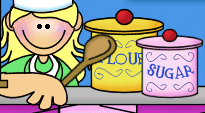I'm only posting this after Chinese New Year due to being outstation and also not having internet connection for awhile.My sincere apologies.
Today I'll be posting about the most exciting celebration for me this year so far.
No.. it is not New Year's or Valentines, BUT...It's Chinese New Year!!!I may not be a Chinese but I sure know how to celebrate their New Years!
Then again, what is the point of celebrating when you don't know anything about the occasion?
So here are some interesting information on Chinese New Year that will be beneficial for your children.
CHINESE NEW YEAR
A celebration that is celebrated once a year. One of the most interesting things about this festival is that there is no fixed date. Every year, the date will be changed but it is usually around late January to early February. The Chinese New Year starts on a New Moon and ends on a full moon 15 days later. What a unique festival!15 days long! This year, it is the year of the Tiger.
During this festival, the married will give the singles "ang pao". The singles include children to adults who are not married. On the eve, the whole family will get together to have their family reunion. Everyone will be dressed up in red and in their traditional costumes such as the cheong sam for girls and samfu for boys.
That is a simple and interesting information for your children.You can prolong the lesson by asking them how they spent their Chinese New Year or what is their opinion on this festival.You are sure to get some interesting answers from those amazingly creative minds.
As an art lesson, you can teach them how to make a dragon toy. It will be in a form of a puppet.
The materials needed are:
Steps:
1. Draw the head and the tail of a dragon on a piece of paper.
2.Cut the head and the tail out and decorate with bright colours.
3.Fold a piece of paper in half the long way. Cut along the folded line, making two long rectangles.
4.Fold each piece of paper up like an accordion. Glue or tape the two pieces together, forming one long piece that will be the animal's body.
5.Glue or tape one end of the body to the head. Glue or tape the other end of the body to the tail.
6.Tape one skewer (or straw) to the head and the other skewer (or straw) onto the tail.
You now have a dragon that can dance for Chinese New Year!
Your Dragon will end up looking something like this.Be creative and have fun!








